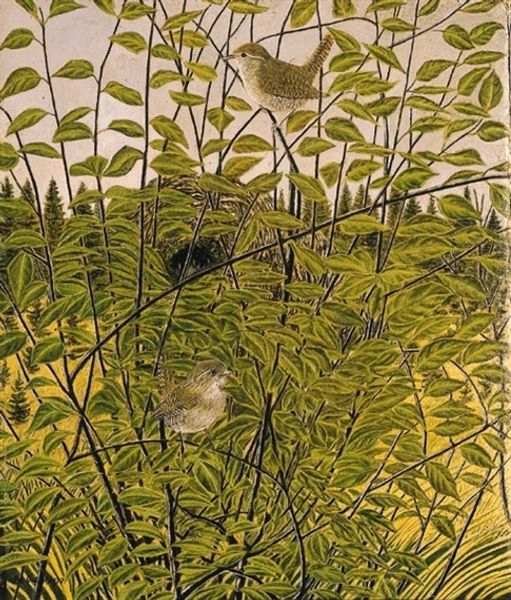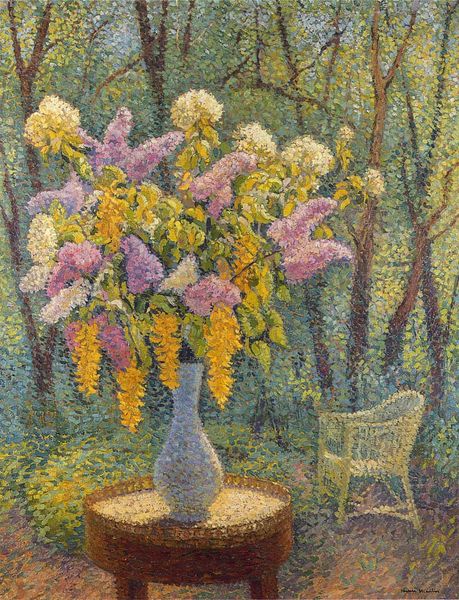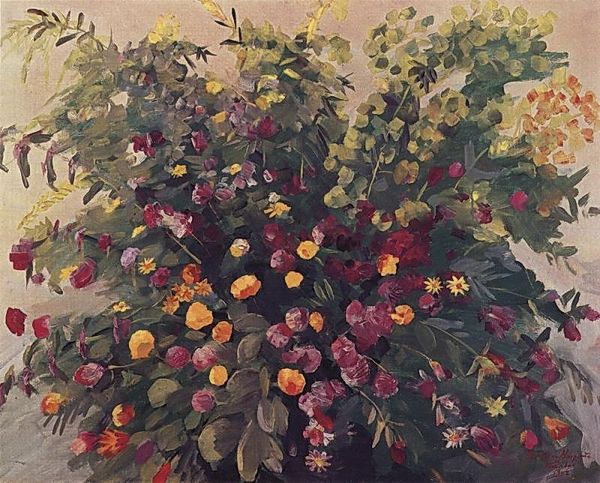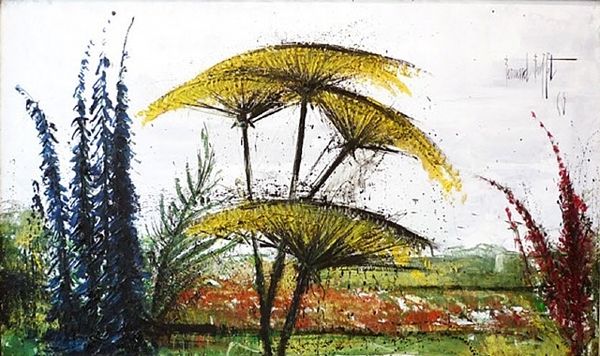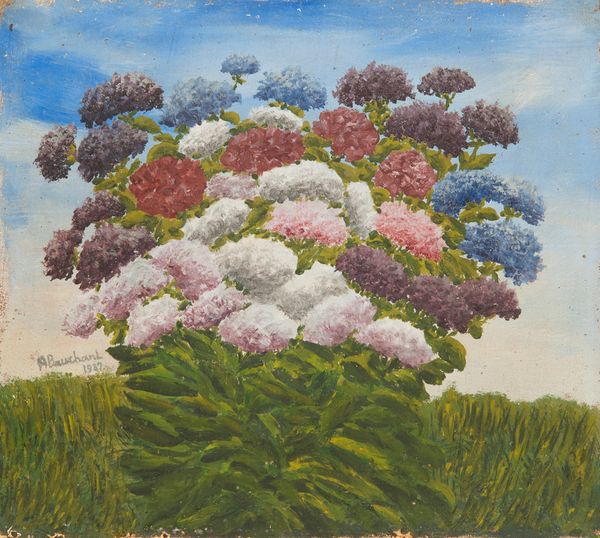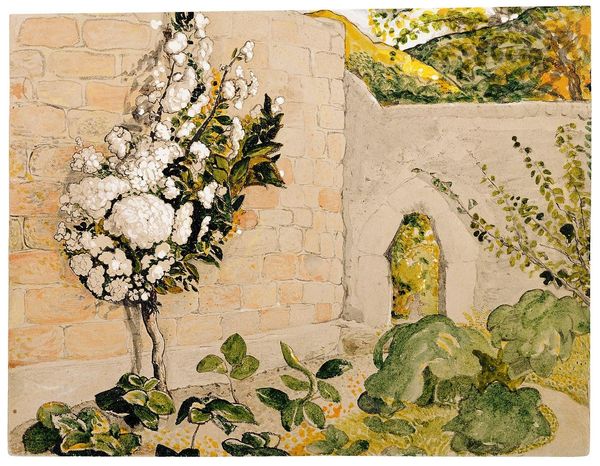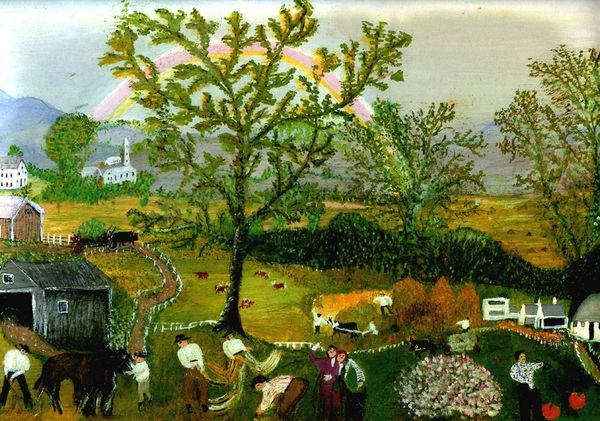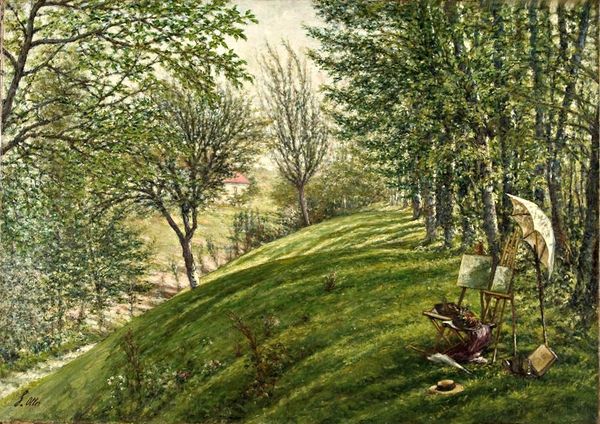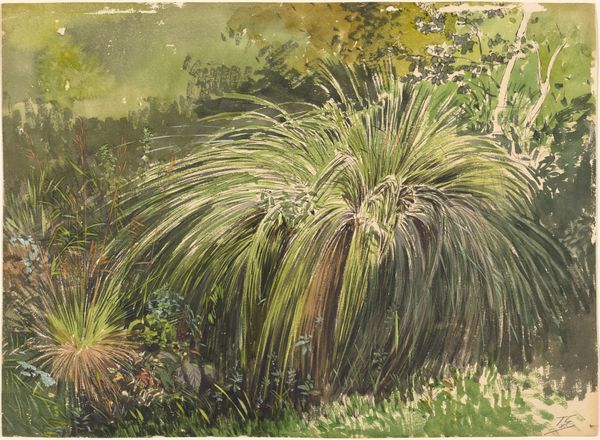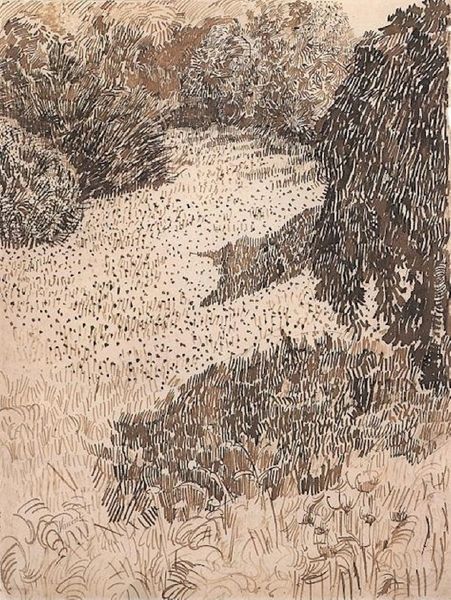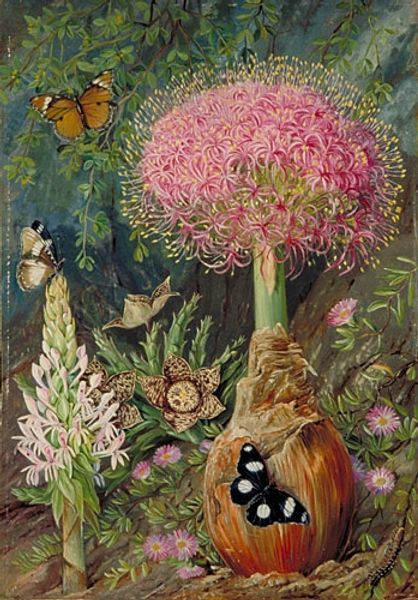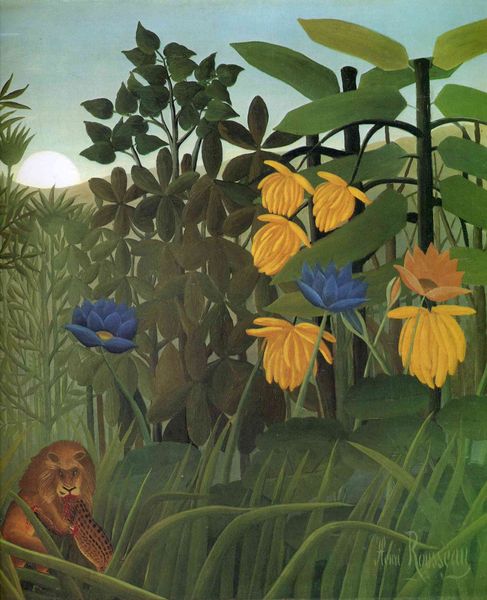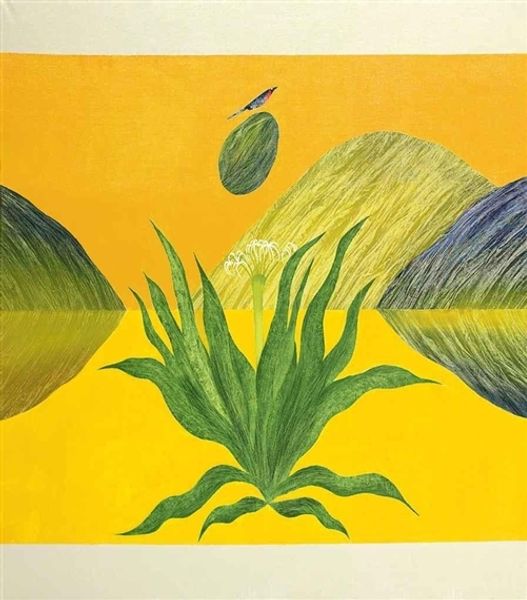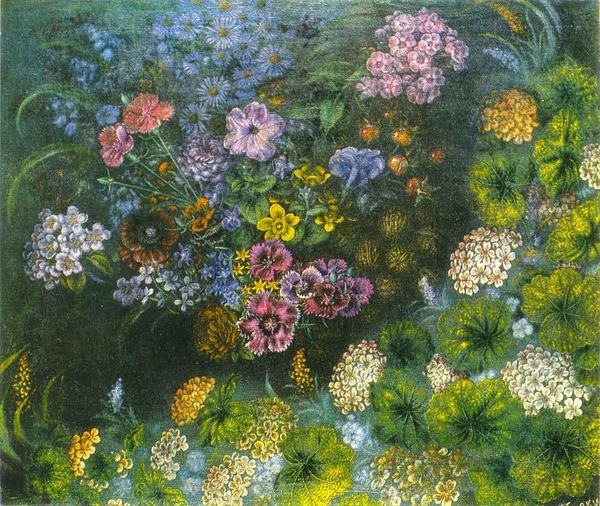
Copyright: Adolf Dietrich,Fair Use
Curator: Here we have Adolf Dietrich's "Goldregen im Eugensberg" from 1928. The materials are pastel and watercolour. What strikes you most upon seeing this piece? Editor: Immediately, I'm struck by the intensity of the gold. It's not subtle, it's almost aggressively joyful. The layering and the textural details give it such life, but something feels a little off. It is an odd blend of very saturated colours, all competing for my attention, fighting against each other in a very tiny frame. Curator: Dietrich was an interesting figure, often associated with naïve art. He largely stayed within his native Switzerland, living a somewhat secluded life, close to nature. His style really bucks some of the art world trends we see gaining prominence in that era. Instead of engaging in some type of overt societal critique, he almost withdraws, right? Editor: Precisely. And this withdrawal is evident in his subject matter. Instead of reflecting a response to modernity, we find this very idyllic pastoral image. Given the rise of totalitarian regimes at the time, this almost feels like a deliberate turning away from the social and political unrest. The composition reinforces this insular quality; the close cropping of the subject gives the sense that we are peering in on this perfect golden place, which only highlights that such tranquility and such an innocence feels unreal and inaccessible now, more so in our own time even. Curator: I see your point. The choice to portray such untouched nature really invites us to analyze the societal pressures influencing Dietrich. It is so important that we address that museums tend to box up a historical period, without the proper socio-political awareness. How might we, as art professionals, use Dietrich's art as a prompt? Editor: We have an ethical duty, I feel, to unpack and present those tensions between nature and the turbulent social landscape, and Dietrich presents this odd tension quite eloquently in this intimate composition. And thinking more about its place within this museum, there are narratives we could introduce by way of thoughtful juxtaposition with other works, so it might prompt questions around how artists grapple with these types of political realities and individual refuge. Curator: Those artistic dialogues that you suggest feel vital to contextualize not just Dietrich's vision but the era as a whole. This work prompts reflection on our responsibilities as interpreters. Editor: Agreed. Seeing art this way transforms it from being just a thing to look at into a valuable way to build cultural awareness.
Comments
No comments
Be the first to comment and join the conversation on the ultimate creative platform.
